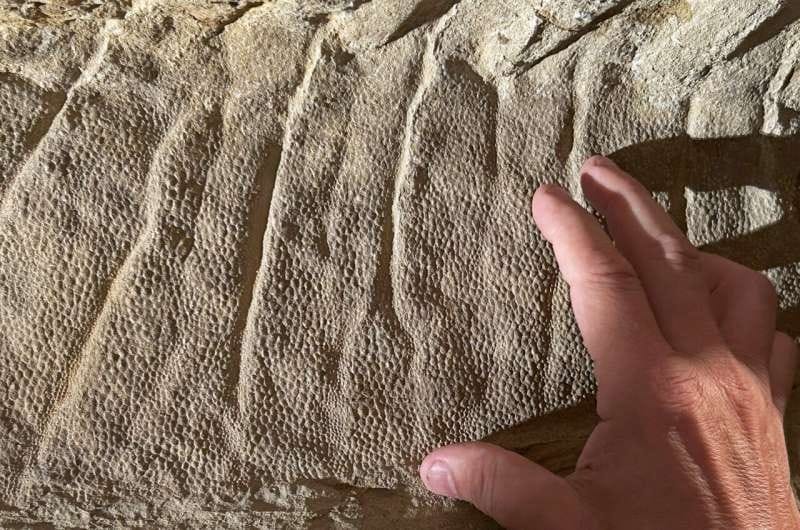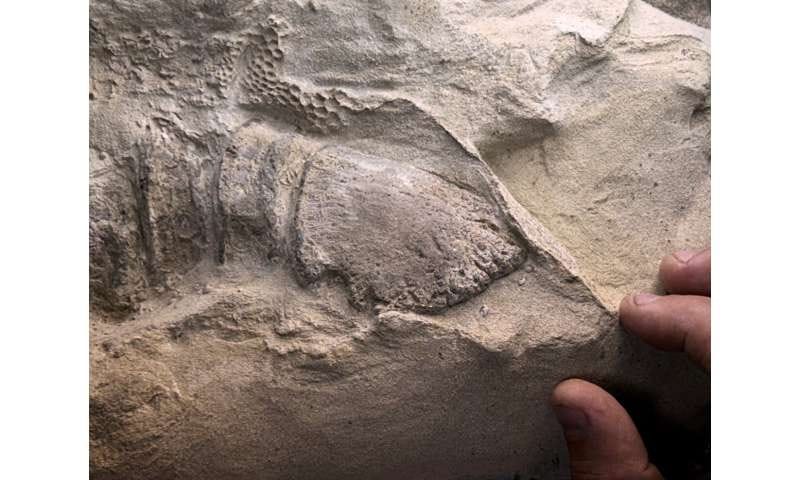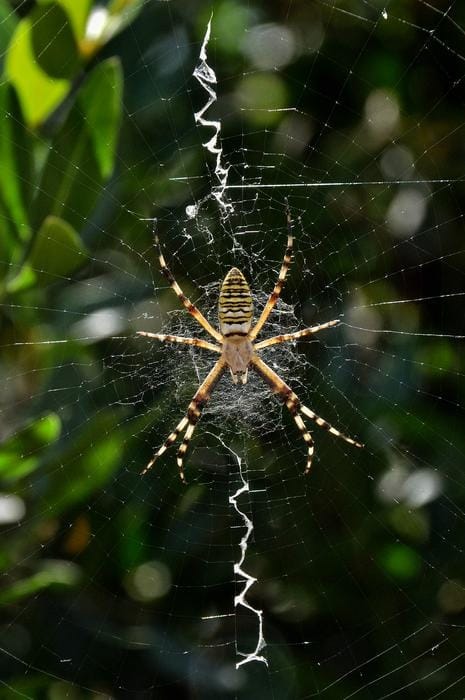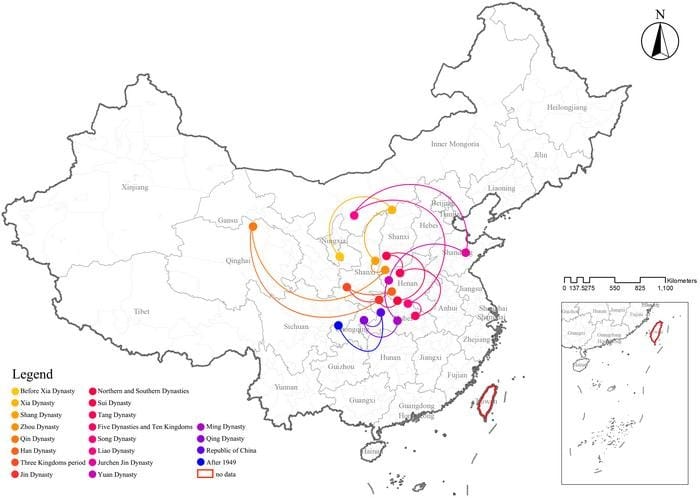Welcome back to a special scary installment of the Abstract! Is Halloween over? Technically yes. But as lovers of spooky season will know, the fallout from Halloween—when dawn reveals the remains of the festivities—is an extension of the day itself. That is why I have assembled a parade of horrors for you this morning.
First, ancient mummies from a watery grave. Then: : let’s get tangled up in one of the great mysteries of spider webs; watch out for the venomous snakes; and lastly, scientists literally ask where the bodies are buried.
For more of my work, check out my book First Contact: The Story of Our Obsession with Aliens, or subscribe to my personal newsletter the BeX Files.
And now, Halloween is over but the darkness lingers on…
Prepare to enter the “mummy zone”
If you think human mummies are scary, wait until you meet dinosaur mummies.
Paleontologists have discovered the mummified remains of two duck-billed dinosaurs that belong to the species Edmontosaurus (go Oilers!) annectens, which lived 66 million years ago in what is now Wyoming.
The immaculate preservation of the animals—a 2-year-old juvenile and young adult that was roughly 5 to 8 years old—exposed unprecedented corporeal details, such as intricate polygonal scales, spinal spikes, fleshy contours, skin wrinkles, and the first hooves ever identified in a dinosaur (or any reptile), making them the oldest hooves in the fossil record.

“The late juvenile is the first subadult dinosaur mummy on record and the first large-bodied dinosaur preserving the fleshy midline over the trunk,” said researchers led by Paul Sereno of the University of Chicago. “The early adult is the first hadrosaurid to preserve the entire spike row from hips to tail tip and the first reptile preserving wedge-shaped pedal hooves.”
These “end-Cretaceous E. annectens preserve the oldest hoof renderings for any tetrapod, the first record of hooves in a reptile” and “the first instance of a hooved tetrapod capable of bipedal locomotion,” the team added.

For more than a century, paleontologists have discovered dinosaur mummies in what the team delightfully calls the “mummy zone” of the Lance Formation of east-central Wyoming. In addition to adding new specimens to this collection, Sereno and his colleagues have also shed light on the rare process of “clay templating” that produces this preservation of mummified flesh, skin, and other soft tissues.
As the carcasses of these Edmontosaurs dried in the Cretaceous sun, they were suddenly immersed under a flash flood that left a thin biofilm over their skin, preserving the three-dimensional soft tissues in time. The team concluded that “the extraordinary preservation of the ‘mummy zone’ is due to rapid subsidence in a coastal setting subject to seasonal drought-flood cycles.”
While it’s sad that these dinos died young, it’s a miracle that we can observe their flesh, skin, and hooves 66 million years later. Anyway, it’s not as if they had much to look forward to, since the die was already cast for the non-avian dinosaurs. In this case, the die is an apocalyptic space rock to which we humans owe our existence—and the reality of these cosmic gambles of fate is frankly scarier than any mummy, even a dinosaur mummy, ever could be.
In other news…
Deck the halls with stabilimenta
Halloween revelers will be taking down their decorative spider-web today, but real spiders keep their web decor up all year long. Researchers have long struggled to make sense of the silky zigzag ornaments that some spiders weave, known as “stabilimenta,” which could serve as insect attractors, predator defense, thermal protection, or water collection. Nobody is really sure!

Now, a team has suggested that stabilimenta might be vibrational amplifiers that help alert spiders to prey impacting the web. “No studies have yet investigated how web decorations affect vibration propagation in orb webs,” said researchers led by Gabriele Greco of the Swedish University of Agricultural Sciences. By studying wasp spiders in Sardinia, the team found that in certain cases, ”the presence of the stabilimentum enhances the spider’s ability to detect prey location…compared to webs without a stabilimentum.”
“However, from a biological standpoint, the high variability in stabilimentum geometry suggests that the observed differences in elastic wave propagation are unlikely to have a consistent or significant functional role,” the team added.
In other words, these web decorations still defy a one-size-fits-all explanation. My own hypothesis is that they are just the dorm room posters of the spider world.
A new antivenom bites back
Though I am a militant ophiophilist, even I can see how a clade of dangerous limbless weirdos ended up becoming so widely feared and maligned. Snakes kill tens of thousands of people per year, an ongoing tragedy that has galvanized researchers to develop antivenom “cocktails” that could treat snakebit emergencies across many species while also mitigating adverse immunological reactions.
A new study has now addressed this challenge “by immunizing an alpaca and a llama with the venoms of 18 different snakes, including mambas, cobras and rinkhals,” said researchers led by Shirin Ahmadi of the Technical University of Denmark.
The cocktail “effectively prevented venom-induced lethality in vivo across 17 African elapid snake species” and “shows considerable promise for comprehensive, continent-wide protection against snakebites by all medically relevant African elapids,” the team added.
While it will take much more research to prove it is safe and effective in humans, the antivenom is a significant step toward preventing snakebite deaths and injuries. It's also about the only cocktail that you hope you’ll never have the desire to order.
The more (dead), the merrier
We’ll close on that most hallowed of Halloween traditions—a trip to the haunted cemetery.
In an unprecedented study, researchers mapped out tens of thousands of ancient Chinese tombs spanning the past 4,000 years since the Xia Dynasty. The team used mapping software to analyze the age and location of the tombs to search for clues about the social and political impacts on burial locations.

“The number of ancient tombs varied significantly across historical periods” with the Qing dynasty (1644 - 1912) accounting for 47.012 percent of the national total, while the Sui dynasty (581 - 618) had only 0.134 percent, according to researchers led by Quanbao Ma of the Beijing University of Civil Engineering and Architecture.
“From a temporal perspective, periods of frequent dynastic transitions and wars in Chinese history were often accompanied by significant population declines and migrations,” the team added. “However, during post-war recovery and periods of societal stability, population numbers typically rebounded and grew rapidly, which was also reflected in the increasing number of deceased individuals requiring burial.”
In other words, contrary to Halloween lore, it can be a good sign to find a lot of dead bodies in one place because it’s often an indicator of more peaceful and stable times (dead bodies, after all, are the product of living ones). What might be more creepy is an absence of graves in your general vicinity. With that in mind, go visit your local ghosts; they are great company this time of year.
Thanks for reading! See you next week.

